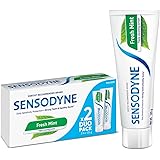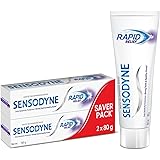Cavities & Tooth Decay – Causes, Prevention, and Treatment Options
Introduction
Cavities and tooth decay are among the most common oral health problems worldwide. Despite advancements in dental care, millions of people suffer from cavities due to poor oral hygiene, dietary choices, and other risk factors. Understanding the causes, prevention, and treatment options for cavities can help individuals maintain optimal oral health and avoid serious dental complications.
What Are Cavities?
Cavities, also known as dental caries or tooth decay, are permanently damaged areas in the hard surface of the teeth that develop into tiny openings or holes. Cavities occur when bacteria in the mouth produce acids that erode the enamel, the outermost layer of the tooth. If left untreated, cavities can lead to pain, infection, and even tooth loss.
The Science Behind Tooth Decay
Tooth decay occurs due to a complex interaction of multiple factors, including bacteria, dietary sugars, and saliva composition. The process typically follows these steps:
1. Plaque Formation: A sticky film of bacteria (dental plaque) forms on the surface of the teeth.
2. Acid Production: Bacteria in plaque convert sugars from food into acids.
3. Enamel Erosion: These acids demineralize the enamel, creating weak spots.
4. Cavity Formation: If demineralization continues without repair, a cavity forms.
Causes of Cavities
Several factors contribute to the development of cavities, including:
1. Poor Oral Hygiene
Not brushing and flossing regularly allows plaque to build up, increasing the risk of cavities.
2. Sugary and Acidic Foods & Beverages
Frequent consumption of sugary foods, soft drinks, and acidic juices feeds harmful bacteria, leading to decay.
3. Dry Mouth (Xerostomia)
Saliva helps neutralize acids and wash away food particles. A lack of saliva increases the risk of cavities.
4. Bacteria & Plaque Buildup
Certain bacteria, especially Streptococcus mutans and Lactobacillus, contribute significantly to tooth decay.
5. Frequent Snacking
Eating frequently without brushing can leave food particles on teeth for long periods, promoting decay.
6. Genetics
Some individuals may have inherited factors that make them more prone to cavities.
7. Acid Reflux & Medical Conditions
Gastroesophageal reflux disease (GERD) can bring stomach acids into the mouth, eroding enamel.
Signs & Symptoms of Cavities
Cavities can develop silently, but as they progress, the following symptoms may occur:
-
Tooth Sensitivity: Increased sensitivity to hot, cold, or sweet foods.
-
Toothache: Persistent or intermittent pain in the affected tooth.
-
Visible Holes or Pits: Small dark spots or visible holes on the tooth surface.
-
Bad Breath: Persistent foul breath due to bacterial activity.
-
Pain While Chewing: Discomfort or pain when biting down on food.
-
Swelling or Abscess: Severe decay may cause infection leading to swelling and pus formation.
Prevention of Cavities
Preventing cavities requires a combination of good oral hygiene, dietary habits, and regular dental visits.
1. Maintain Proper Oral Hygiene
-
Brush twice daily using fluoride toothpaste.
-
Floss daily to remove plaque between teeth.
-
Use an antibacterial mouthwash to reduce bacteria.
2. Eat a Balanced Diet
-
Limit sugary and starchy foods.
-
Include dairy products, fruits, and vegetables for strong teeth.
-
Drink plenty of water to maintain saliva production.
3. Regular Dental Checkups
-
Visit the dentist at least twice a year.
-
Get professional cleanings and fluoride treatments.
-
Address early signs of cavities promptly.
4. Use Fluoride Products
Fluoride strengthens enamel and prevents demineralization. Use fluoride toothpaste, mouthwash, and, if needed, fluoride treatments from a dentist.
5. Dental Sealants
Sealants are thin protective coatings applied to the chewing surfaces of molars to prevent decay.
6. Avoid Smoking & Alcohol
Smoking and excessive alcohol consumption contribute to dry mouth and bacterial growth, increasing the risk of decay.
Treatment Options for Cavities
Depending on the severity of the cavity, different treatment options are available.
1. Fluoride Treatment (For Early-Stage Cavities)
Fluoride helps remineralize weakened enamel and can reverse small cavities in the early stages.
2. Dental Fillings
For moderate cavities, dentists remove the decayed portion of the tooth and fill the space with materials like composite resin, amalgam, or ceramic.
3. Crowns
For larger cavities or weakened teeth, a crown (cap) is placed over the tooth to restore its shape and function.
4. Root Canal Treatment
If decay reaches the inner pulp of the tooth, a root canal is performed to remove infected tissue and seal the tooth.
5. Tooth Extraction
If the tooth is severely decayed and cannot be saved, extraction may be necessary. The missing tooth can be replaced with a dental implant, bridge, or denture.
6. Laser Dentistry
Some dentists use laser treatment to remove decayed areas with minimal discomfort and faster healing.
Home Remedies for Cavity Prevention
Although home remedies cannot cure cavities, they can support oral health:
-
Oil Pulling: Swishing coconut or sesame oil may reduce bacteria.
-
Aloe Vera: Natural antibacterial properties may help combat plaque.
-
Clove Oil: Can provide temporary relief from tooth pain.
-
Xylitol Gum: Helps stimulate saliva and reduce bacterial growth.
Myths & Facts About Cavities
Myth 1: Only children get cavities.
Fact: Cavities can occur at any age due to poor oral hygiene and dietary habits.
Myth 2: Sugar is the only cause of cavities.
Fact: While sugar plays a significant role, cavities result from a combination of bacteria, acid, and poor hygiene.
Myth 3: If a cavity doesn’t hurt, it doesn’t need treatment.
Fact: Early cavities may not cause pain but can worsen over time. Regular dental checkups help detect cavities early.
Conclusion
Cavities and tooth decay are preventable and treatable with proper oral care, a healthy diet, and regular dental visits. Early detection is crucial to avoid complications. By adopting good dental hygiene habits and seeking professional care, you can maintain a healthy, cavity-free smile for life.
Frequently Asked Questions (FAQs)
Q1: How do I know if I have a cavity?
A: Symptoms include tooth sensitivity, pain, visible holes, and bad breath. A dental checkup can confirm cavities.
Q2: Can cavities heal on their own?
A: Early-stage cavities may be remineralized with fluoride, but advanced decay requires professional treatment.
Q3: Are cavities contagious?
A: The bacteria that cause cavities can spread through saliva, making it possible to transmit cavity-causing bacteria.
Q4: How often should I visit the dentist?
A: Ideally, every six months for a checkup and professional cleaning.
Q5: Can I prevent cavities with diet alone?
A: A healthy diet helps, but brushing, flossing, and dental visits are essential for complete cavity prevention.





